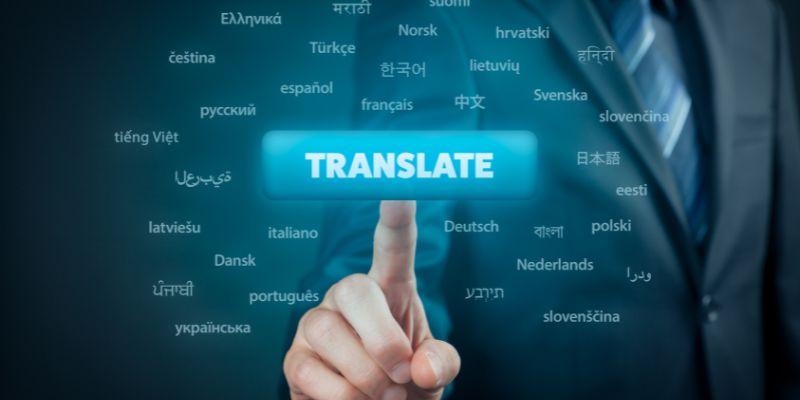Origins and Concept
Kääntäjäö is a term derived from Finnish, where “kääntäjäö” means “translator” and “ö” is a suffix indicating a state or condition. Although the term itself may not be widely recognized in the mainstream, it embodies a broader and increasingly relevant concept in the field of translation studies. Kääntäjäö refers to a state or condition of enhanced translation capabilities enabled by advanced technologies and methodologies.
The concept emerged from the confluence of several trends in translation studies and technology. With the rise of machine translation, neural networks, and sophisticated algorithms, the boundaries of traditional translation methods have been expanded. Kääntäjäö symbolizes this shift toward a more dynamic and context-aware approach to translation, where the focus is not just on linguistic accuracy but also on cultural and contextual relevance.
Key Components of Kääntäjäö
Kääntäjäö encompasses several key components that contribute to its transformative impact on translation practices:
- Advanced Machine Translation (MT): At the heart of Kääntäjäö is the integration of advanced machine translation technologies. Modern MT systems, powered by neural networks and deep learning algorithms, are capable of translating text with greater accuracy and contextual understanding than ever before. These systems leverage vast amounts of data and complex models to produce translations that are more fluent and natural.
- Contextual Awareness: Traditional translation methods often struggled with context, leading to translations that were literal or disconnected from the intended meaning. Kääntäjäö addresses this by incorporating contextual awareness into the translation process. This involves understanding the broader context in which a text is used, including cultural references, idiomatic expressions, and situational factors.
- Cultural Sensitivity: Effective translation goes beyond mere words; it requires an understanding of cultural nuances and practices. Kääntäjäö emphasizes cultural sensitivity by incorporating insights into cultural norms, values, and social dynamics. This ensures that translations are not only accurate but also culturally appropriate and resonant.
- Human-Machine Collaboration: While advanced technologies play a crucial role in this, human expertise remains indispensable. The framework promotes collaboration between human translators and machine translation systems. Human translators provide the cultural and contextual insights necessary to refine and enhance machine-generated translations.
- Feedback Loops and Continuous Improvement: Kääntäjäö incorporates feedback loops that allow for continuous improvement of translation systems. By analyzing user feedback, translation outcomes, and evolving language use, systems can be updated and refined to better meet the needs of users and address emerging challenges.
Applications of Kääntäjäö
The Kääntäjäö framework has wide-ranging applications across various domains, reflecting its impact on both professional and everyday contexts. Some notable applications include:
- Global Business and Communication: In the business world, effective communication across languages is crucial for international operations and customer relations. It enhances business communication by providing more accurate and contextually relevant translations, facilitating smoother interactions with clients, partners, and stakeholders.
- Digital Content and Media: The digital media landscape relies heavily on translation to reach global audiences. Kääntäjäö improves the quality of translations for websites, social media, and multimedia content, ensuring that messages resonate with diverse audiences and maintain their intended impact.
- Diplomacy and International Relations: In diplomacy and international relations, precise and culturally sensitive communication is essential. Kääntäjäö supports diplomatic efforts by providing translations that accurately convey intentions, policies, and agreements while respecting cultural differences.
- Healthcare and Medical Research: Accurate translation is vital in the healthcare sector, where misunderstandings can have serious consequences. Kääntäjäö enhances medical translation by ensuring that patient information, medical research, and healthcare resources are accurately and sensitively translated for diverse populations.
- Education and Academia: In education and academia, Kääntäjäö supports the translation of academic papers, research findings, and educational materials. This facilitates knowledge exchange and collaboration across linguistic and cultural boundaries, promoting a more inclusive and global academic community.
- Entertainment and Literature: Translating literature, films, and other forms of entertainment requires a delicate balance of accuracy and artistic expression. Kääntäjäö contributes to this by providing translations that preserve the essence of creative works while adapting them for different cultural contexts.
Challenges and Considerations
While Kääntäjäö represents a significant advancement in translation practices, it also presents several challenges and considerations that must be addressed:
- Quality Control: Ensuring the quality of translations generated by advanced systems remains a challenge. Despite improvements in machine translation, errors and inaccuracies can still occur. Effective quality control measures, including human review and validation, are necessary to maintain high standards.
- Cultural Nuances: While Kääntäjäö emphasizes cultural sensitivity, capturing the full complexity of cultural nuances remains a challenge. Translators and systems must continuously refine their understanding of cultural contexts to provide translations that are truly resonant and appropriate.
- Ethical Considerations: The use of advanced translation technologies raises ethical considerations, including issues related to data privacy, intellectual property, and the potential for misuse. Establishing ethical guidelines and practices is crucial for ensuring responsible and fair use of translation technologies.
- Accessibility and Inclusivity: Ensuring that translation technologies are accessible and inclusive is essential for addressing the needs of diverse populations. This includes providing support for lesser-known languages and dialects, as well as considering the needs of users with disabilities.
- Human Expertise: While machine translation plays a significant role in Kääntäjäö, human expertise remains essential. Balancing the roles of human translators and technology is crucial for achieving optimal translation outcomes and preserving the value of human insights and creativity.
The Future of Kääntäjäö
Looking ahead, the future of Kääntäjäö is shaped by several trends and developments that promise to further enhance its impact and capabilities:
- Advancements in AI and NLP: Ongoing advancements in artificial intelligence (AI) and natural language processing (NLP) will continue to drive improvements in translation technologies. Enhanced algorithms, more sophisticated models, and greater computational power will contribute to more accurate and contextually aware translations.
- Integration with Emerging Technologies: Kääntäjäö is likely to integrate with emerging technologies such as augmented reality (AR), virtual reality (VR), and blockchain. These integrations could enable new forms of translation and communication, further expanding the possibilities for global interaction.
- Collaborative Ecosystems: The future of Kääntäjäö may involve the development of collaborative ecosystems that bring together technology developers, linguists, cultural experts, and end-users. These ecosystems will foster innovation and ensure that translation solutions are tailored to the diverse needs of global communities.
- Personalization and Customization: Advances in machine learning and user data analysis will enable more personalized and customized translation experiences. Users may have the ability to tailor translations based on their preferences, cultural background, and specific needs.
- Ethical and Regulatory Frameworks: As translation technologies continue to evolve, the development of ethical and regulatory frameworks will be essential. These frameworks will address issues such as data privacy, intellectual property, and the responsible use of technology, ensuring that Kääntäjäö is used in a fair and ethical manner.
Conclusion
Kääntäjäö represents a transformative development in the field of translation and intercultural communication. By integrating advanced machine translation technologies with contextual awareness, cultural sensitivity, and human expertise, Kääntäjäö enhances the quality and effectiveness of translations across various domains.
As technology continues to advance and global interactions become increasingly complex, the principles and practices of Kääntäjäö will play a crucial role in bridging linguistic and cultural boundaries. By addressing the challenges and embracing the opportunities presented by Kääntäjäö, we can foster more meaningful and inclusive communication in an ever-connected world.










